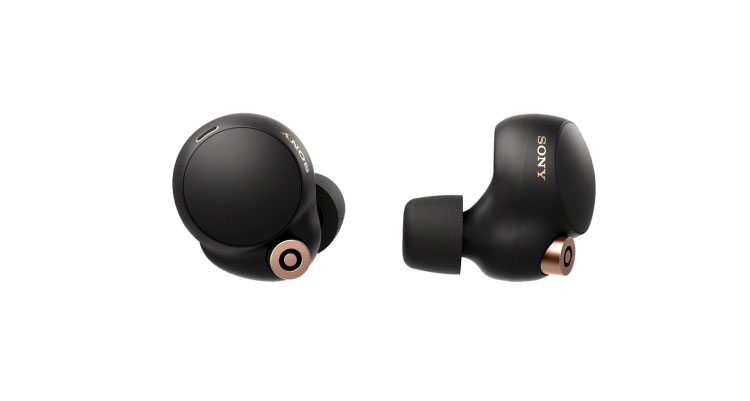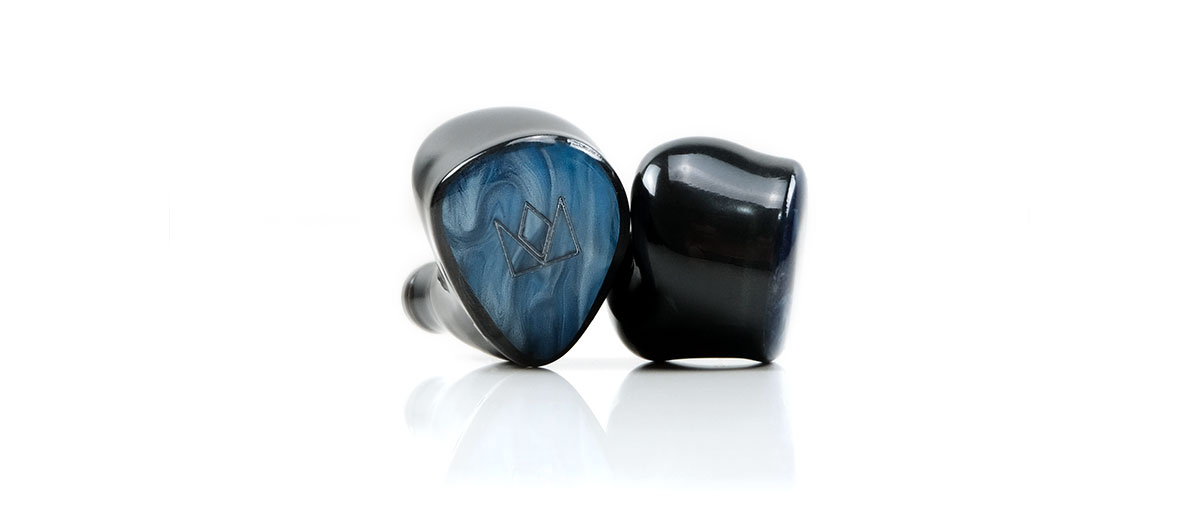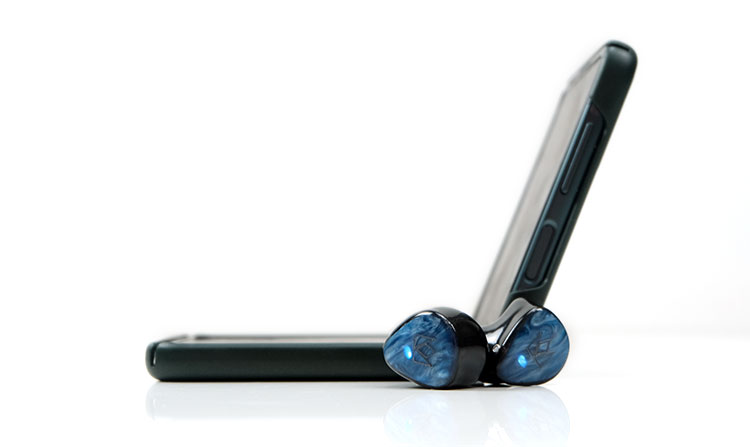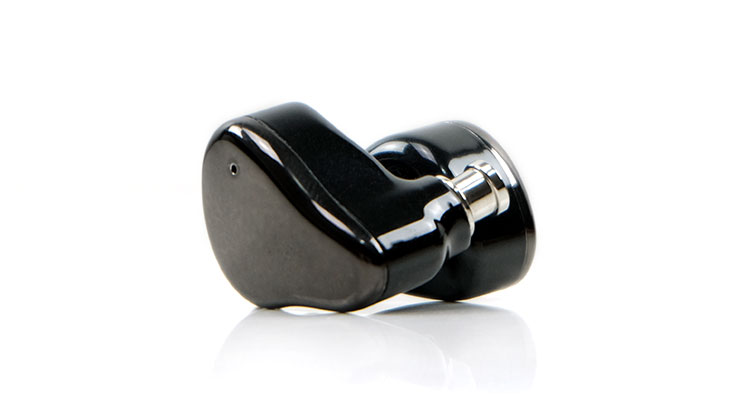Sound Impressions
Summary
The Fokus Pro presentation is like a smoother more mature evolution from the previous Falcon Pro. Instead of a resolving V-shaped high contrast coloration we now have a lively but more natural-sounding W-shaped performance.
The technical capability of the Fokus Pro is excellent and probably one of the most impressive TWS’s out there today in terms of dynamic range and clarity. Except now the tuning sounds more balanced, more flexible, and for my own preferences, delivering a superior midrange and a vibrant vocal presence.
That is not to say this TWS is an entirely mid-centric performer. Compared to the Falcon Pro the sub-bass is just as deep, just as powerful but its newer 8.2mm driver sound every bit the bigger brother of the 6.5mm version inside the Falcon Pro.
That means you get some serious sub-bass rumble and reach but with less bloom and better texture. Despite the Falcon Pro being a fairly thunderous low-end performer in its own right, the Fokus Pro bass tuning just sounds far more balanced and controlled than its predecessor.
This is a more natural-sounding treble compared to the thinner peakier Falcon Pro sound signature. The older Pro’s high contrast sound is exciting and excellent with EDM and synthwave but can fatigue with percussion-heavy rock standards and vocal-centric numbers. This time the Fokus Pro gets the treble balance right with a softer overtone and a smoother harmonic balance.
Frequency Response
As mentioned, more w-shaped this time around with a shade less treble peaking and a sub-bass to mid-bass curve that seems more linear than on the Falcon Pro.
It is still sub-bass biased below around 60Hz but there is less of an L-shaped sharp drop from 20Hz down to 100Hz and not as flat or as recessed through the lower-mids from 300Hz up to 1k.
Importantly, the Fokus Pro has some lift in the 1-4k region bringing vocals and instruments more to the fore and not as diffuse and thin sounding as the Falcon Pro’s V-shaped response.
Combine that with a high tuning that seems to have a stronger lower treble push than orphaned upper treble peaks results in a slightly softer percussion attack and better body through the upper mids and vocal performance.
For those who like to EQ to produce a slightly mellower curve, the Fokus app will give you that option. I recommend a subtle drop on the 8kHz and 16kHz bands of between 2-4dB to soften high pitching instruments’ coloration.
For those who want to bring on even more fun, a 1-2dB low shelf on the 31Hz and 62Hz will produce an immediate response from that dynamic driver. Combining both EQ adjustments will give you a solid combination for brighter hard rock recordings.
Timbre
The Fokus Pro timbre is neutral and lively though contextually smoother and less fatiguing when compared to the Falcon Pro.
The bass fundamental in lower pitching notes is excellent, with plenty of power but it’s not an “always-on” booming type of coloration. Rather when called upon it delivers that familiar rounded and robust dynamic drive texture right down to 20Hz.
Lively and deep it may be but the Fokus Pro low-end bass also sounds tighter and livelier than the competition such as the WF-1000XM4 and the GF8s which came across as warmer and denser up to the lower mids.
Lower-mids are not as sucked out as the Falcon Pro, they do have some presence and body with a neutral to natural sounding timbre.
Note body is much better than the previous generation Noble TWS, particularly female vocals which are front, better textured, and with a slightly softer attack. Not as rounded or as warm as the aforementioned competitor’s but sibilance is kept to a minimum making this a very good vocal-orientated TWS.
Staging
The Fokus Pro staging is very deep, mid-forward from 1-4k, and with good if not overextended in terms of height. If you are coming from the older Falcon Pro the Fokus Pro presentation is also going to sound the more immersive of the two with Noble doing a good job of keeping the mids clear of heavy bass bleed.
Stereo imaging is good with improved instrumental separation over the older Falcon Pro’s more diffuse presentation. The staging is not overly wide, rather it is stretched more front to back with vocals to the fore so the listening focus is hitting those key touchpoints, aka, the fundamental, sub-bass response, and vocal imaging.
The upper treble is not as aggressively amplified as the Falcon Pro so there is more of a natural fade that places a little more emphasis on those upper mids and percussion but without the sizzle and high contrast coloration. That means a good presence but not one that pushes down and drowns out the vocal performances with splashy percussion performances.
Overall, the Fokus Pro staging sounds more coherent and flexible for a wider range of genres with less bass/treble emphasis and a better midrange instrumental and vocal focus.
Wireless Performance
Pairing
There are two ways to access the Fokus Pro, via your regular Android BT pairing service and thereafter with the new Fokus Pro app. Note, you cannot pair the Fokus Pro with the previous Noble Sound Suite app which caters only to the Falcon TWS series.
The secondary route, via the Fokus App, adopts the same process as the Noble Sound app. Basically, leave the drivers beside your phone, power up the app, pair the drivers via the regular BT and it should then find them quick enough. Once the app picks up on the Fokus Pro drivers you then have access to the features within the app including battery information.
Pairing via Android is very quick and seamless with a single “Noble Fokus Pro” label discovery during scanning thanks to the TrueWireless Stereo feature. No more left and right labels and confusing old me on which one to pair with. The Fokus app itself is also a little more reliable than the older Noble Sound suite/Falcon Pro for finding and connecting.
Stability & Range
The overall stability of the Fokus Pro is very good with ranges of up to 8-9m without any significant dropout using a Samsung Z Flip 3 pairing. It should have no reliability issues on a daily carry basis with your phone in the bag or pocket.
However, in terms of maximum distance, it is just slightly behind the likes of the Geekfly GF8s, and the Sony WF-1000XM4. Both were able to go past a second wall at around 11m whereas the Fokus Pro started to break up about 0.5m behind. Not a huge gap though and not something I suspect will play into a lot of usage scenarios.
Latency
Not sure what Noble has down with the Fokus pro chipset implementation but the latency on both smartphones via YouTube and Windows 10 VLC is best in class for me. I felt no need whatsoever to add any hastening sync to the audio mix to keep up with the video sample using the aptX.
Select Comparisons
Noble Audio Falcon Pro
The Falcon Pro is currently has a sold-out status on the Noble website so I am not sure if that is the end of the road or it designed to run alongside the Fokus Pro. However, given the small $20 price difference and the improvements on the Fokus Pro it may well be it is being phased out.
$329
Technical
Like the Fokus Pro, the Falcon Pro uses a triple driver hybrid configuration but with a smaller 6mm tri-layered titanium-coated dynamic driver (TLT) as opposed to the larger Fokus Pro 8.2mm custom dynamic driver.
The “SRDD” Knowles dual BA driver inside the Falcon Pro is not the same set as the one used inside the Fokus Pro though Noble doesn’t mention what the new ones are.
They do share a lot of common technology though. For example, both use a QCC3040 BT5.2 SoC chipset with TrueWireless Stereo support and both can decode up to aptX Adaptive so the codec choices are fairly similar.
The two TWS systems are also touch sensor-based with a fairly in-depth app to customize and control a number of features. These are two separate apps, however, with the Falcon Pro using the Noble Sound Suite and the Fokus Pro using the Noble Fokus app. Both are free and available on the Google Play Store.
The Falcon Pro is IPX5 rated which the Fokus Pro does not offer. That means the Falcon Pro is more suited to wetter climes than the Fokus Pro and maybe the more ideal choice for gym use.
Design
The Fokus Pro is the more aesthetically pleasing modern IEM design with a more comfortable fit and a high-quality 3D printed resin material. The Falcon Pro looks neat and tidy but it pales in contrast to that blue marble customized plate ‘pop’ from the Fokus Pro. Of the two, the Fokus Pro is going to be the more socially acceptable form factor.
However, I give props to the deep fit of the Falcon Pro and its superior isolation. That nozzle and ePro tip combination is truly excellent for passive isolation and perhaps even better than some ANC TWS on the market.
Of course, you have to be comfortable with that deep fit and the Fokus Pro is all about better comfort with its contoured natural shape giving you a flush fit to the ear and less pressure in the canal.
There are pros and cons also with the cradle and battery life. The individual Falcon Pro drivers last longer at up to 10 hours with 70% volume and the Fokus Pro only at 7.5 hours at 50% volume.
The pros, however, are the massive increase in battery life and superior build quality of the Fokus cradle at up to 60 hours and beyond compared to just 28 hours for the Falcon cradle.
Performance
In terms of FR, the Falcon Pro has a more emphasized V-shaped response with a high contrast sound signature and a listening experience that tends to draw you to the lows and highs. The timbre here is cooler with note body through the mids a lot leaner.
The Fokus Pro is a little more W-shaped for me with better body and a more natural smoother-sounding timbre. It sounds to me like there is a lot more 2-4k emphasis on the Fokus Pro FR to tease out the vocal also.
The weight on both at the very low-end is north of neutral, perhaps more so on the Falcon Pro sub-bass which can get a bit boomy in comparison. You also get a much sharper dip into the lower-mids from the Falcon Pro tuning and in turn delivers that leaner lower-mids sound.
The Fokus Pro carries a bit more warmth through the mids and in particular vocals. If you are a Billie Elish fan then the Fokus Pro reproduces that breathy vocal style in a more natural manner with less extreme contrast and more texture.
It also pushes these types of vocals more to the fore countering that deep-sounding dynamic bass driver performance and sounding more balanced compared to the Falcon Pro.
A big factor in that smoother sound signature on the upper mids is the treble tuning of those new Knowles drivers which seems to follow a more natural curve post 5k. The Fokus Pro harmonic balance has improved with less of the sharp partial overtones on percussion and high-pitched instruments in general that was a feature of the Falcon Pro presentation.
Geekfly GF8s
$229
Technical
The Geekfly GF8s is the ‘dark horse’ of the TWS world, at least in my eyes. This understated TWS system packs in the most complex and impressive driver system I have reviewed to date.
The configuration is a titanium-plated 7mm dynamic driver for the lows and mids, a single balanced full-range armature for the mids and mid-highs, and a 10-layer piezoelectric ceramic tweeter for the super-highs.
The Fokus Pro is also a hybrid but with a 3-driver configuration using a larger 8.2mm dynamic driver for the lows and mids and a dual BA driver for the mid-highs and highs.
Further, the GF8s uses a class A amplifier combined with a power supply and audio filter circuit as opposed to directly amplifying from the SoC in the same manner as the Fokus Pro does from its QCC3040 chipset.
Beyond the driver side, it is a different story altogether. The Fokus Pro has a more powerful suite of codec options from SBC up to aptX Adaptive whereas the GF8s really missed the boat here with just SBC and AAC available.
The GF8s also has a lower BT5.0 protocol as opposed to BT5.2 inside the Fokus Pro and though both are touch-capable the GF8s has no customization options nor does it have an app with any EQ or firmware update capability.
Design
Both designs are aiming for a traditional IEM form factor, however, the GF8s design is not as complex nor are the materials quite as impressive. However, the GF8s is a little lighter and shallower than the Fokus Pro drivers despite having that additional driver and class A amp inside.
The G8Fs aesthetic is heavily black and silvery with a polished black plastic shell and a subtle metallic top faceplate for a bit of contrast. The Fokus Pro just looks more appealing with that branded blue marble custom faceplate and it’s not a fingerprint magnet like the GF8s plate.
Both are vented designs with medium-length nozzles and both fit very comfortably in your ear. I would say the GF8s has a slight edge in terms of comfort as it’s relatively smaller and lighter but the isolation performance is the same for both using silicone tips.
The basic all-plastic black GF8s cradle is smaller and lighter than the Fokus Pro metal design but the quality of the materials is very average in comparison. I would have a lot more confidence in the durability of the metal build of the Fokus Pro cradle.
The Fokus Pro battery life is also much better at over 60 hours and 7.5 hours in the drivers compared to just 5 hours for the GF8s drivers and up to 20 hours in the cradle.
Performance
The Geekfly is a little darker and warmer sounding than the Fokus Pro but its resolving capability is almost as good even with just an SBC profile. If the Falcon Pro makes the Fokus Pro sound the more natural and smoother of the two, then the GF8s makes the Fokus Pro the more neutral sounding.
In terms of FR, the GF8s is the more V-shaped of the two TWS with a tuning profile heavier on the sub-bass weight and warmth which carries a bit more into the mid-range giving it more of a euphonic rounded vocal timbre and instrumental tone.
The Fokus Pro is tighter on the low-end, still fairly sub-bass biased but not as weighted or as warm through the mid-bass and into the midrange. Both have a good vocal presence but the Fokus Pro has a bit more clarity and air and a slightly better balance against its more controlled low-end performance.
The GF8s vocal presence is good but overall, just a little behind that low-end aggression and weight, hence that slightly relaxed sound. The smoothness in the timbre is also exacerbated by a 4-6k drop in the GF8’s FR that robs vocals of a little air and shine.
The Fokus Pro does a bit better in this department with a bit more air and a more neutral vocal timbre from an improved treble extension and presence. You can hear a bit more BA texture in those drier mids and shorter decay of the Fokus Pro highs but this is calmer waters compared to the Falcon Pro.
Sony WF-1000XM4
We do not have a review of the Sony flagship TWS just yet, we may do so early in 2022 but compared to the previous generation there are a lot of improvements.
$279
Technical
Pretty much everything about the Sony WF-1000XM4 is designed in-house from the driver to the SoC and the external design. Sony is an electronic behemoth capable of doing that.
Inside, it sticks with the single 6mm dynamic driver size as with the previous generation though this is an entirely new design to tie in with an improved ANC performance and yes, better bass.
On paper, the Fokus Pro outdoes the Sony with a bigger 8.2mm dynamic driver and those two additional BA drivers to cover the highs. This is a more complex driver configuration.
However, Sony has a trump card and that is LDAC. This is one of only two TWS that I know of that can receive an LDAC transmission and that makes a big difference. The Fokus Pro can decode up to 24BIT/48kHz with its aptX Adaptive technology but it is some way short of the 24BIT/96kHz capability of the Sony.
On top of that, the WF-1000XM4 has some excellent ANC capability. I would pitch the Fokus Pro against the Sony in the passive isolation stakes but sadly it cannot quite manage the noise-canceling excellence of the Sony when the ANC is turned on.
The apps for both are excellent but the Sony version can offer just a little bit more added value beyond EQ and control customization with access to Sony’s 360 Reality Audio library via the likes of Deezer.

Design
Both have beautiful aesthetics but for differing reasons. The Sony doesn’t have the ‘pop’ of the custom blue marble plate of the Fokus Pro it does have a superior level of design engineering in the shell finishing and an IPX4 rating.
Mind you the Fokus Pro is smaller, possibly lighter with a contoured design that will produce a flusher fit inside the ear. The WF-1000XM4’s taller form factor means they do stick out a little more and never quite feel as secure in the ear as the Fokus Pro.
The hybrid tips that come with the Sony’s are fantastic though, well worth the money and possibly even tips I would love to use with the Fokus Pro if its nozzle wasn’t so wide.
The cradle is a different matter. The WF-1000XM4 cradle is plastic and to be honest a bit cheap looking compared to the bigger over-engineered 3rd gen case. the smaller metal alloy of the Noble case looks more premium and durable at the same time.
Battery life is split with the WF-1000XM4 doing better for the individual drivers at up to 12 hours without ANC but much lower with ANC on. Sony has it at 8 hours which, on paper, has a slight edge on the Fokus Pro’s 7.5 hours life span at 50% volume but test conditions are unknown for the WF-1000XM4.
The cradle battery life for the WF-1000XM4 is also much shorter at between 24-36 hours compared to 60 to 75 hours for the Fokus Pro cradle. However, the Sony cradle is Qi-enabled for wireless charging, something I do not think the Fokus Pro has when I tested it on my Qi wireless pad.
Performance
The WF-1000XM4 is aiming more for a smooth almost L-shaped response curve with a thicker, warmer dynamic driver texture, some substantial sub-bass heft, and a slightly forward vocal.
Compared to the Fokus Pro it is a little darker sounding, with less treble extension and presence and less contrast in its timbre also. The Sony FR does have a gentle 1-2k nudge that keeps the majority of vocals above the mix.
The Fokus Pro W-shaped curve and mix of dynamic and BA texture will give you plenty of power and a stronger sub-bass response but less mid-bass warmth compared to the Sony.
Of the two the Sony is a bit deeper sounding but the slower of the two dynamic drivers with a longer decay. You could argue that has a better timbral consistency with its single dynamic driver. However, the Fokus Pro does sound more vibrant in the mids with improved height and air. It also teases out a bit more perceived detail and sparkle with its dual BA driver mix.
The instrumental timbre on both has a strong bass fundamental, perhaps more so on the Sony, but the Fokus Pro adds a bit more treble odd-harmonic bias into the timbral mix to enhance the perceived snap and clarity.
Vocals will be perceived as sitting a bit further back on the Sony compared to the Fokus Pro but not recessed. Two things at play here. First, the greater bass density and amplitude of the Sony and the slightly smaller 1-2k bump for vocal presence swing your listening bias further south.
The second, the Fokus Pro upper mids and treble are more forward sounding adding more percussion presence and sharpening the detail a bit more. Here your listening bias is shifting a bit higher.
Our Verdict
The Fokus Pro is Noble’s most mature and balanced-sounding TWS to date. Do not get me wrong though, it is still very lively tuning with a thunderous low end. However, the superior mids-focus and smoother treble tuning mean it is a more flexible offering for a wider range of musical tastes compared to the older Falcon line.
The app is largely unchanged in terms of core features but it is more UI-friendly lick of paint and better reliability make it more enticing to use. Especially the EQ which a lot of TWS users tend to like.
Yes, it is an expensive TWS and it lacks an IPX rating but with its more attractive IEM form factor and superior battery life, I still think you are also getting a lot more feature value for that additional $20 over the older Falcon Pro.
Noble Audio Fokus Pro Specifications
- Chip: QCC3040
- Driver Details: one 8.2mm customized dynamic driver, two Knowles balanced armature drivers
- Sensor type for earbud operation: Touch
- cVc noise-canceling for calls: SupportedBluetooth 5.2
- Bluetooth Profile: HPP, HSP, A2DP, AVRCP
- Audio Codec: SBC/AAC/APTX/APTX adaptive
- True Wireless Mirroring
- Supported Multi-Pairing, however, Multi-Connection not supported.
- Operating Range – about 10 meters.
- Battery Capacity in Earbuds – 3.7v 45 mAH – approximately 7.5 hours at 50%
- Battery capacity of charging case 500 mAH (approximately 8-10 charges of the earbuds)
- Earbud and Charging case charge times – approximately 1.5 hours
- Earbud standby time – approximately 100 days
- Charging case standby time without earbuds – approximately 150 days
- Charging port on case – USB Type C (5v / 1A)





